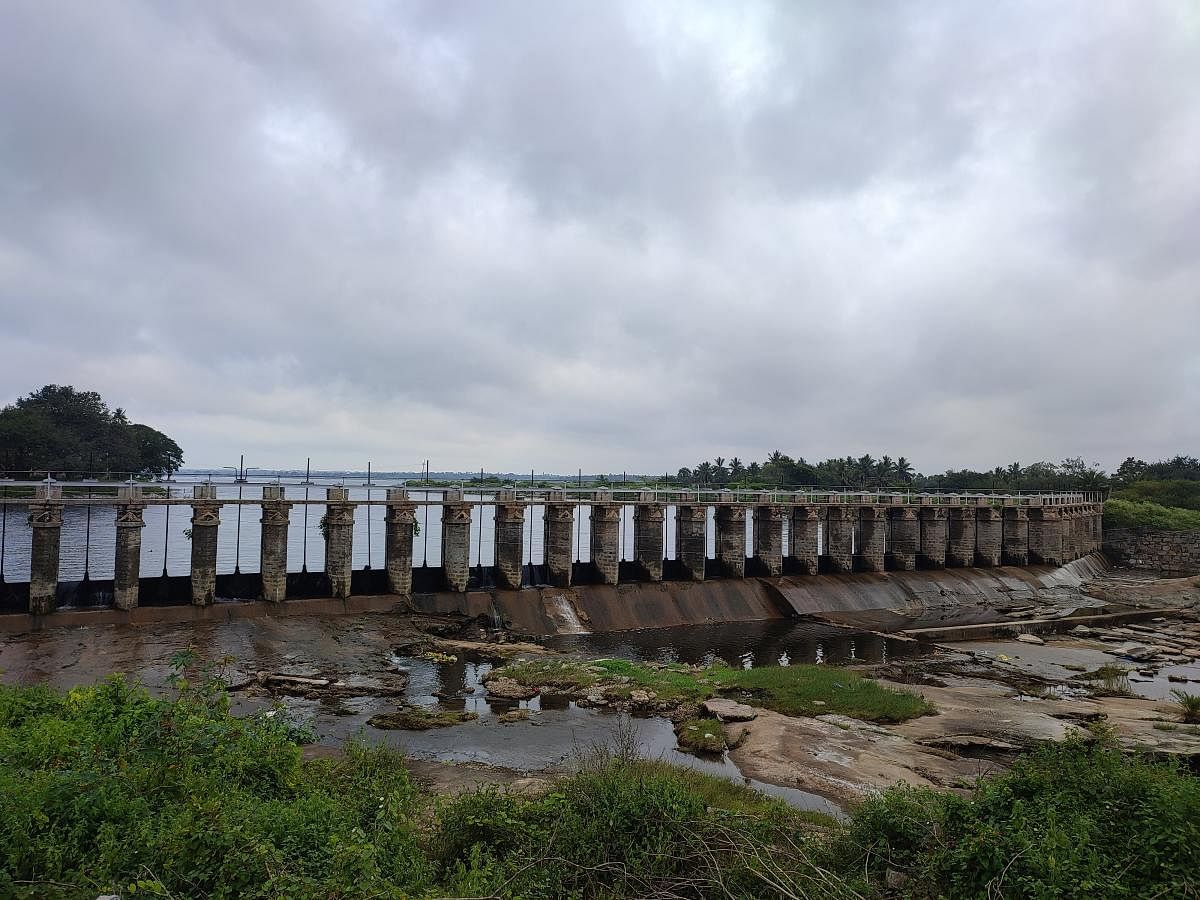
Swaying palm trees, dense fluttering flora and the quiet of a shimmering water body — these elements kindle the sober spirit in us. The sky alternates between tufts of cotton clouds and patchy grey ones, each competing to establish their supremacy on the blue canvas. We are in Bethamangala, a small town in the Bangarpet taluk of Kolar district.
We are here on a weekday to avoid the weekend bustle. As we stand on the Bethamangala dam, the glistening waters of the Palar river reflect the floating clouds above, bathing the rocks and according a mystic fabric to the landscape around us.
Once known as ‘Vedamangalam’ or ‘Vedapuri’, Bethamangala is set against the serene backdrop of the Palar river. The 348 km long river, celebrated in music, folklore, literature and poetry, rises in the Nandi Hills in Karnataka’s Chikkaballapur district. It meanders for 93 km in Karnataka, enters Andhra Pradesh and Tamil Nadu before finally merging with the Bay of Bengal at Vayalur, 100 km from Chennai.
The serpentine flow of the river in Karnataka is underground for a substantial distance before it emerges at Bethamangala. The two dams — Bethamangala reservoir and Ramasagara (or Bukkasagara) reservoir —across the river in Karnataka are set 7 km apart. They are scenic and serve as picnic spots for locals and visitors alike.
The Bethamangala lake was built around the 1900s. It was once home to the Bethamangala Sailing Club, a popular recreational haunt for the British residents of that time. About 12 km from the Kolar Gold Fields, the lake also served as the main source of water for the mines when they were operational.
The temple
The Vijayendra Swamy temple in the town dates back to the period of the Western Ganga dynasty with subsequent renovations by the Hoysala and Vijayanagar rulers. The dam serves as the backdrop to the temple, which has no distinguishing architectural features. It has a low compound wall of grey stone and flagstaff overlooking the main shrine.
This is unlike characteristic Dravidian, Hoysala or South Indian style edifices of worship which have towering gopuras, dome-shaped cupola and vimanas over the sanctuary.
However, the shrine draws crowds due to the idol of Venkateshwara housed within. This presiding deity is known by the name of Vijayendra Swamy.
The idol is 6.5 feet tall and pictured in padmasana, or sitting posture. The pedestal on which the figurine is seated is flanked on either side by lions, a feature usually associated with Goddess Durga.
Lying adjacent to the Vijayendra Swamy temple is a 70-year-old place of worship dedicated to Lord Shiva. A few yards from here is a spectacular idol of Hanuman that towers 18.5 feet tall.